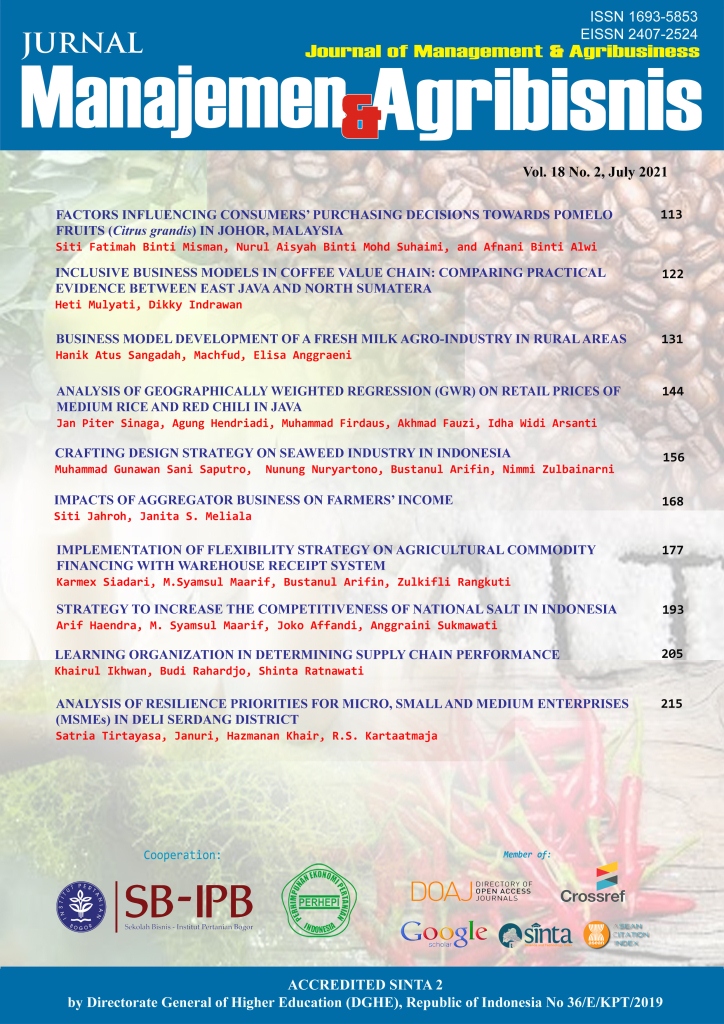Abstract
Agricultural produces pass a long journey from the farms up to the end consumers. With the advancement of information technology, aggregator businesses have emerged to shorten the long distribution chain. Therefore, farmers as producers can access information both on prices received by consumers and the characteristics of products demanded by consumers. This study aims to (1) explain the distribution chain mechanism through the aggregator business, and (2) analyze the impact on farmers who join the aggregator business distribution chain. There were 12 aggregator businesses and 36 farmers were interviewed as respondents from February to April 2019 using the purposive sampling method. The analysis was conducted using a descriptive approach and a paired sample t-test was carried out to see the impact of the existence of an aggregator on farmers. The results showed that the distribution chain through the aggregator business was shorter compared to the conventional one in which farmers had specific contracts or agreements with the aggregator business. The impact on farmers who join the aggregator business distribution chain is receiving higher prices, leading to increase farmers' income, transparency in prices where farmers know the selling prices at the consumer level, and farmers know consumer preferences for the products. It is expected that farmers will be able to produce better agricultural produces according to consumer preferences as well as to increase farmers' income.
Keywords: distribution chain, price, product preferences, transparency
Authors
Authors who publish with this journal agree to the following terms:
- Authors retain copyright and grant the journal right of first publication with the work simultaneously licensed under a Creative Commons Attribution License that allows others to share the work with an acknowledgement of the work's authorship and initial publication in this journal.
- Authors are able to enter into separate, additional contractual arrangements for the non-exclusive distribution of the journal's published version of the work (e.g., post it to an institutional repository or publish it in a book), with an acknowledgement of its initial publication in this journal.
- Authors are permitted and encouraged to post their work online (e.g., in institutional repositories or on their website) prior to and during the submission process, as it can lead to productive exchanges, as well as earlier and greater citation of published work (See The Effect of Open Access).

